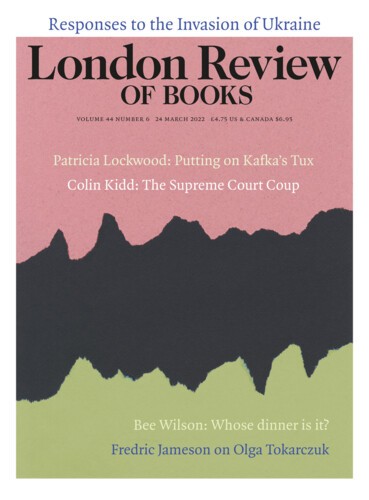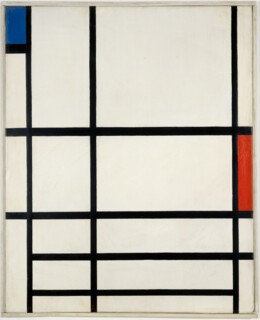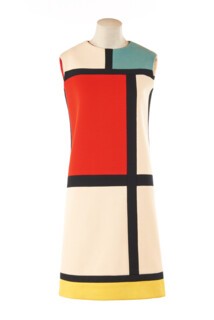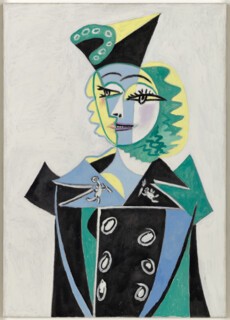Yves Saint Laurent’s admirers seemed determined to memorialise him when he was alive and by the end of his career they had largely succeeded. In 1983, he was the first living designer to be the subject of an exhibition in a museum, at the Met in New York. When he retired in 2002, his final show took the form of a retrospective at the Pompidou, in which some three hundred outfits were paraded in front of two thousand guests for an hour and forty minutes. The campaign to put Saint Laurent behind glass took off in the late 1970s, when rumours about his health required friends to confirm, more than once, that he hadn’t actually died. The gradual change from fame to notoriety and from having his finger on the pulse to being the last representative of a bygone age wasn’t lost on Saint Laurent. When he was at his most inventive, out partying every night, he had described museums as ‘dead’. Towards the end of his working life, when he was best known for being a recluse, he said: ‘It’s as if I live in a museum, all alone.’
Sixty years after Yves Saint Laurent showed his first collection under his own name, museums across Paris have provided his clothes with some fine-art company in Yves Saint Laurent aux musées (until 15 May). At the Pompidou, by the entrance to the floor devoted to the 20th-century avant-garde, Matisse’s La Blouse roumaine (1940) hangs next to a mannequin dressed in an embroidered woollen blouse from the Autumn/Winter 1981 collection and a knee-length velvet skirt, which falls in heavy folds and is belted in the same material. Once the obvious likeness has been acknowledged, however, the effect is underwhelming. The mannequin is no match for Matisse. His subject has movement: the slant of her body and the position of her hands confuses us as to whether she is sitting or standing – perhaps we are even looking at her from above – and the tilt of her head in the opposite direction adds to the dynamism. The sequins, beads and chenille threads of the YSL outfit are certainly more luxurious (and more laborious) than any of the patterned effects that Matisse dashed or daubed onto canvas. As so often with his pictures, it’s the background that pulls it all together, something Éric Rohmer noticed when he put a poster of La Blouse roumaine on the wall of his heroine’s bedroom in Pauline at the Beach, to pick out the red of a rubber ring. By comparison, the headless, limbless YSL mannequin, fixed to a plinth by a single pole, seems forlorn.
The rest of the Pompidou display sensibly discourages close comparisons and sets us on a treasure hunt instead. There are thirteen ensembles displayed around the gallery; not knowing where the next one will be found or how it will be shown is most of the fun, though perhaps not very fair to the art. A Braque-inspired cape (Spring/Summer 1988) gets a prime spot among the Cubist paintings, but the embroidery on its back means the bust is turned away from the viewer, just a hint of neck inclining towards the wall. The most successful moments occur when an outfit is allowed to command the space or comment on its neighbours. A short orange appliqué dress that nods to Picasso’s costumes for Parade makes the surrounding Sonia and Robert Delaunays seem ponderous; it’s hung on a plinth in the centre of the room, so that visitors have to walk around it – an imposing display for a dress that could never be commanding in the wild. Another homage to Picasso, a long-sleeved satin evening dress quartered in black and white, stands to the side of Harlequin and Woman with a Necklace (1917). While the subjects of the painting tilt jauntily to the right, the solitary dress stands primly to attention. On an adjacent wall, only the tricorn hat and right shoulder of Picasso’s deliberately unfinished Harlequin (1923) have been painted in; the rest of his clothes are left outlined and cross-hatched. This Harlequin seems to know that he will never get fully dressed.
The chronological span of the Pompidou’s collection outstrips Saint Laurent’s interest in 20th-century art, but we have to get to the end of art history somehow. Ellsworth Kelly’s Black White (1988) and a black evening gown with diamond-shaped cut-outs make a handsome couple, but the dress is for A/W 1965, the wall text says the designer never cited Kelly as an influence, and the fact that both men admired Matisse seems besides the point.
Each of the museums involved in Yves Saint Laurent aux musées opens its instalment with an image of Saint Laurent (a photograph of him posing naked in 1971 at the Pompidou, a Warhol silkscreen at the Musée d’art moderne de Paris etc) and a quotation. His actual achievements are largely absent from the displays, however, each of which says more about its venue than its supposed subject. At the Louvre, four lavishly embroidered jackets have been placed in the window niches of the Galerie d’Apollon, but mere thread can’t stand up to a gilt and stucco scheme capable of overpowering the jewels and precious hardstone vessels of its permanent collection. The jackets, moreover, are exactly what one shouldn’t wear in these surroundings – unless camouflage in a cave of wonders is the aim.
It isn’t a coincidence that the two most effective shows have nothing to do with art. In front of one of the clock windows at the Musée d’Orsay stands a group of mannequins – five wearing versions of ‘Le Smoking’ (Saint Laurent included a suit in every collection from A/W 1966 on) and two in the long cream silk dresses Jane Birkin and Marie-Hélène de Rothschild wore to the Proust-themed ball that de Rothschild held in 1971. While the dresses look like the throwback they were intended to be, it’s much more intriguing to imagine Albertine getting her hands on a YSL trouser suit (poor Albertine, forced to wear Fortuny). This arrangement is the only instance across the museums of mannequins being turned towards one another, rather than being made to stand in relation to the paintings or the visitors who encounter them. The d’Orsay tableau isn’t vivant, exactly, but for the first time there is a sense of drama and movement, implied relationships between the figures and hints about the way they want to be seen – all the qualities that make fashion interesting. In a similar spirit, the curators at the Musée d’art moderne play with our sense of time, putting two outfits that Saint Laurent designed for Alain Resnais’s film Stavisky, made in 1974 and set mainly in the early 1930s, in the middle of a room of art deco furniture, just in front of Jean Dunand’s gigantic lacquer panel for the SS Normandie.
The Musée Yves Saint Laurent Paris in Avenue Marceau, where the couture house moved in 1974, is a welcome reminder of the many hands that made each outfit and of the whole operation that revolved around Saint Laurent. The first floor contains sketches made for the Pompidou show in 2002; Saint Laurent’s confident drawings, which earned him a job as Christian Dior’s assistant when he was 19, are full of verve, the models almost departing the frame on their way to somewhere more interesting. Upstairs, the atelier proper is full of typological delights. A room full of dummy heads for hats, wooden hat blocks and shoe lasts has all the appeal of a natural history museum curated by Brancusi. A wall of custom-made buttons arranged in a grid imposes order on the essentially frivolous. Perhaps best of all are the toiles. These first attempts to interpret Saint Laurent’s drawings, white fabric forms on which samples of embroidery can be placed and where black ribbons indicate cuts to be made or curves to be created, are so much more lively than the final garments scattered through the city’s museums. These toiles are works in progress, waiting to be inspected by their exacting creator and instead suffering a parade of gawping tourists, some of them no doubt wishing, as I did, that they had made more of an effort with their own outfits.
Send Letters To:
The Editor
London Review of Books,
28 Little Russell Street
London, WC1A 2HN
letters@lrb.co.uk
Please include name, address, and a telephone number.





